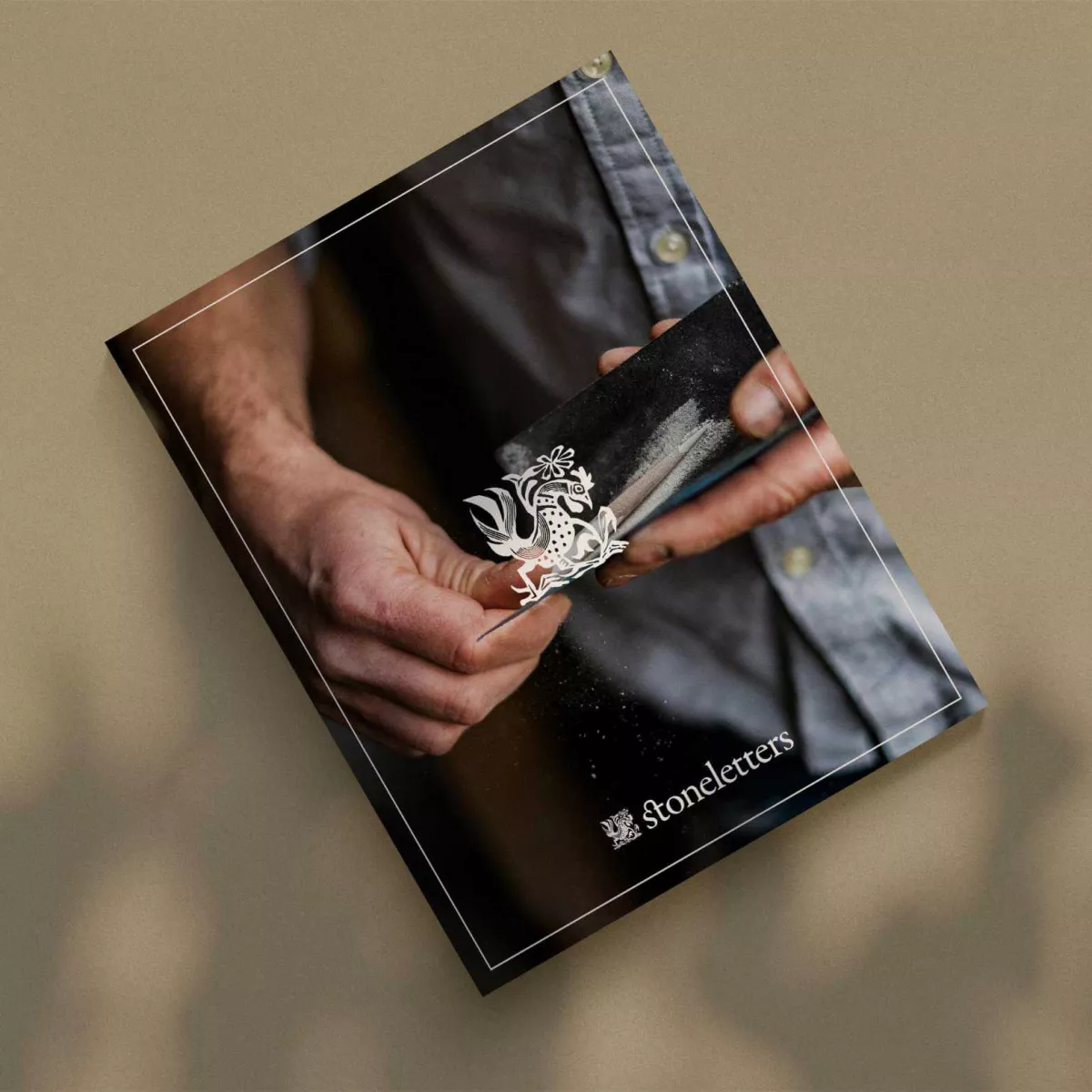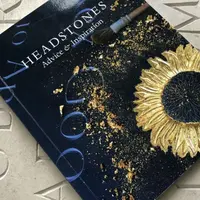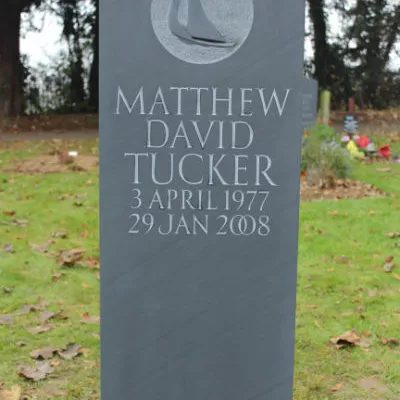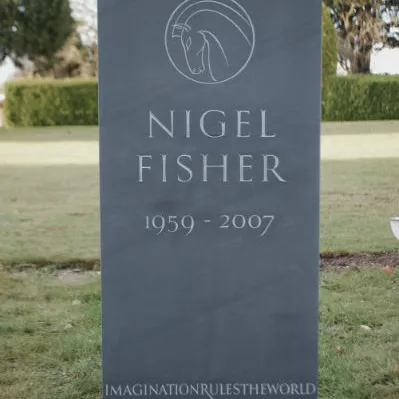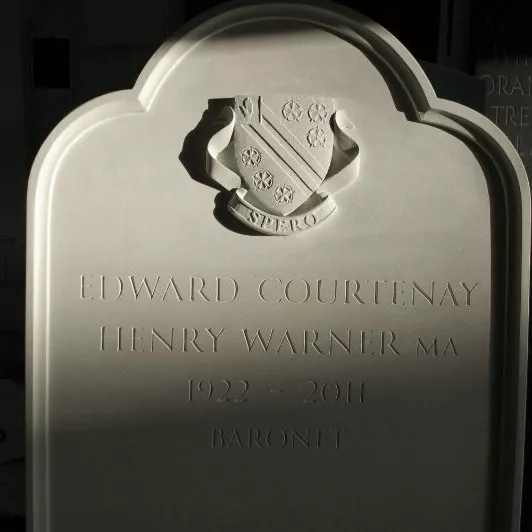By using this website, you agree to our privacy policy
×What is the best stone for a headstone?
What is the best material for a headstone? What type of headstone lasts the longest? These are two of the most common questions I am asked. When deciding on the best headstone material, there are a number of questions you need to ask yourself.
What is the best material for a headstone? What type of headstone lasts the longest?
These are two of the most common questions I am asked. When deciding on the best headstone material, ask yourself the following questions:
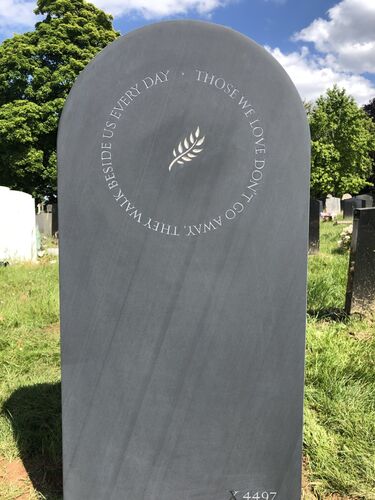
1.What is my personal taste? Am I drawn to any particular type of headstone?
Have a look at our headstones gallery or our new book for inspiration. It might be helpful to gather together a selection of your favourite headstones.
2.Where is the grave located?
If the grave is in a damp location, especially beneath a tree, you would want to consider a harder wearing stone that does not weather too quickly.
3.How long do I want the inscription to be? Do I want any intricate carvings?
If you want a long inscription you need a stone that can take small lettering- some headstone materials are softer than others and therefore need deep, bold and larger lettering so that the inscription lasts.
4.How long-lasting do I want the headstone to be and do I want the headstone to weather?
You may prefer a headstone material that weathers fairly quickly so that it blends in well with a natural churchyard setting, or you may want a headstone that will retain a crisp, new appearance for years to come.
5.What are the local surroundings like? Are the other headstones made from a local stone?
You may wish the headstone to stand out proud among the other headstones, or you may wish the headstone to blend in with the local stones and other headstones already present.
6. Would I like to use a stone sourced from within the UK?
With the exception of Aurisina, all of the headstone materials we recommend below are from the UK.
7. Would I like the headstone to be carved by hand or by machine?
You may be surprised at the absence of imported granite and marble on my list below. Although extremely hard-wearing, and a favourite headstone material choice of monumental masons, they do not lend themselves to hand-carved lettering. Granite and marble tend to be highly polished and do not weather much at all although some people like these materials, we find they do not blend in well with churchyard settings and are increasingly unpopular with vicars.
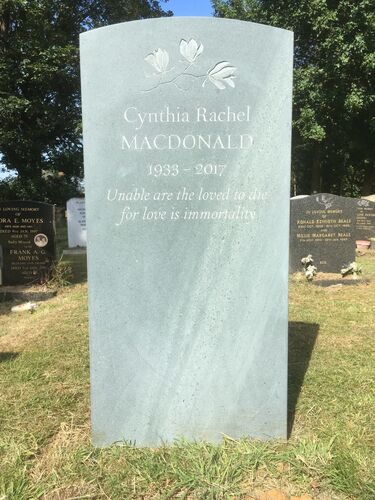
Above is a beautiful green slate headstone.
The best headstone materials for hand-carved headstones are, in no special order:
Dark Grey Slate
There is no other material that matches slate for its versatility and majesty.
Our main source of slate for headstones is Cumbria. This slate is hard, dense, and long-lasting with a charcoal grey colour. It allows for crisp lettering with excellent contrast, producing a clear and fine inscription. The material really comes to life when the inscription is long, and the lettering is small. The surface is rubbed smooth but not at all polished, which means bacteria can still take hold, mellowing the surface and helping the weathering process. It will not stain, however, and can be cleaned easily.
We also use Welsh slate if the client particularly favours it. It is darker but softer. Occasionally we use Cornish slate, but I find it is not as durable, and it tends to scratch easily.
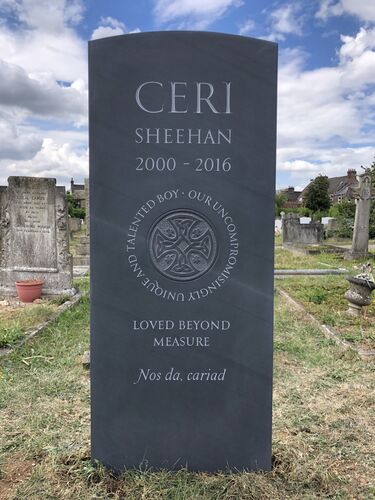
Green Slate
The green slate we use for headstones comes from two quarries in Cumbria: Broughton Moor and Elterwater. There is not much difference between the two, although Broughton Moor slate tends to be more irregular in texture. Like the dark grey slate, it is extremely versatile and typically blends into a country churchyard’s surroundings better than dark grey slate. Green slate is volcanic, granular in texture and much lighter in colour than the dark grey slate.
The swirling texture can be lovely.
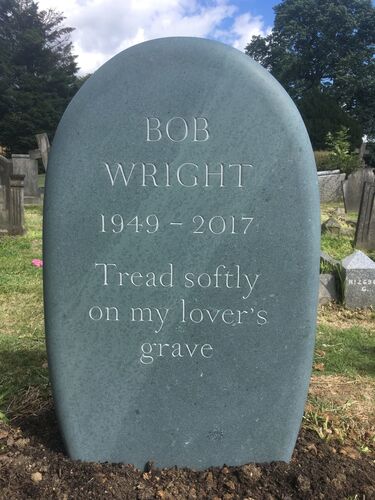
Portland Limestone
This is the classic headstone material.
Portland limestone is long-lasting, clean, and fine-textured. It can look quite white at first, but within a year it begins to weather; the stone mellows, and its initial harshness is quickly forgotten. As time moves on, the letters darken, and the inscription becomes clearer.
Portland limestone needs big, bold and deeply cut letters, and if there is to be a carved image, that image must also be bold and stylised to make the most out of this lovely limestone. This tends to restrict the length of the inscription unless the stone is very tall.
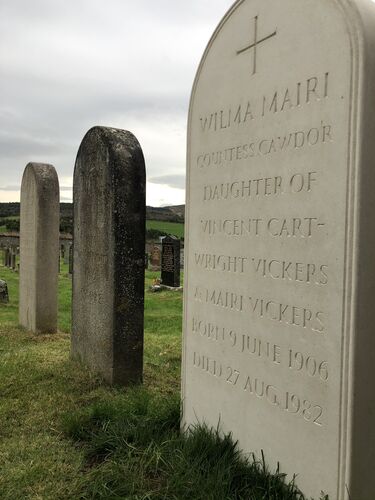
Aurisina Limestone
Many of our headstones are carved in Aurisina. Aurisina is a light beige Italian limestone that looks similar to Portland but is much harder and weathers slowly. Its sister, Nabresina, is commonly used in British churchyards and cemeteries, but we rarely use it as it is too hard for our chisels. I also find it quite cold to the touch and in appearance as it is quite grey.
Aurisina, on the other hand, has much more character, is slightly warmer and is good for smaller lettering.
This is the only imported stone we use, generally in place of Hopton Wood limestone, which is currently unavailable.
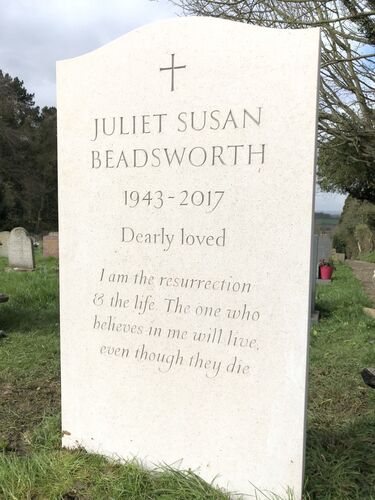
Hopton Wood Limestone
Unfortunately, this wonderful light material much favoured by Eric Gill and Henry Moore is currently unavailable from the quarry.
I am hoping that one day they will start extracting it again as it is the most perfect carving material.
Purbeck Limestone
Purbeck is a hard limestone from Dorset with a lovely even texture.
It is honey in colour and heavily patterned making it a good choice for an old churchyard as it blends in from day one.
We often darken the carved letters with a wash of paint so that they stand out against the natural markings. It can be hard to obtain in very large pieces.
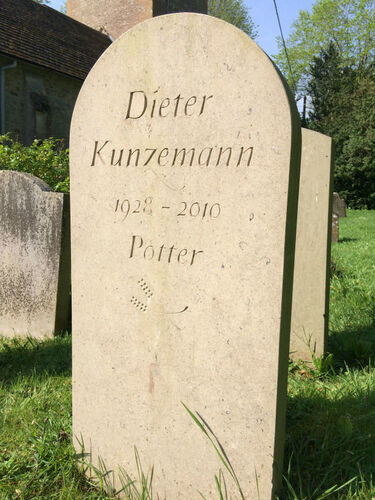
St Bees Sandstone
This Cumbrian sandstone is a pink-red colour with a fine grain and a consistent texture.
It is an uplifting and unusual material.
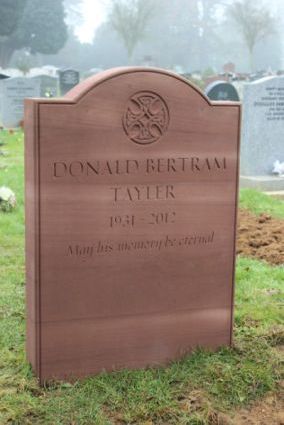
York Stone
We use a York stone known as Woodkirk stone.
This variety of sandstone is very finely textured and nice to carve.
Like Portland limestone, it demands big and bold letterforms. It is relatively inexpensive.
There is no substitute for seeing these stones in person. Please make an appointment to come and visit the workshop, where there are many headstones to see in progress.

Fergus Wessel
Designer and letter-carver
Fergus created Stoneletters Studio in 2003, after training at the Kindersley Workshop. He is a member of the prestigious Master Carver's Association.


Request our free booklet today
- © 2025 Stoneletters
- Legal notice
- Privacy policy
- Disclaimer
